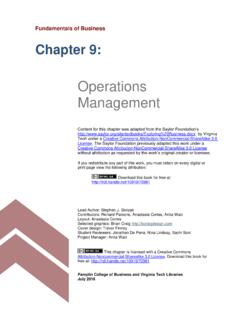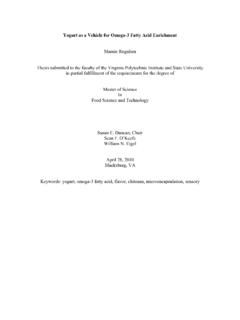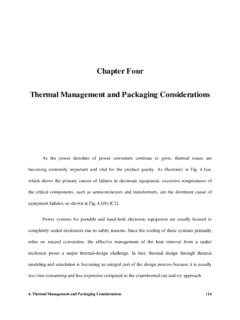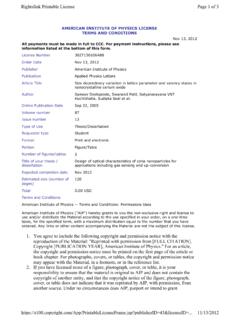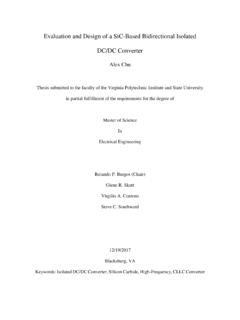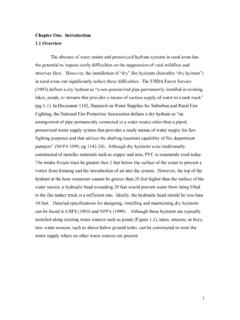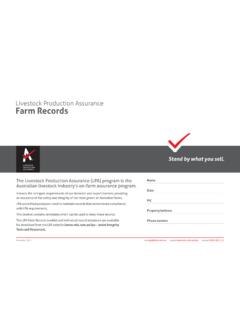Transcription of Part 1: Basic Principles Chapter 2: Sampling Methods
1 1987 S. Wayne Martin, Alan H. Meek, Preben Willeberg Veterinary Epidemiology: Principles and Methods Part 1: Basic Principles Chapter 2: Sampling Methods Orlglnally publlshed 1987 by Iowa State University Press I Ames Rights for this work have been reverted to the authors by the original publisher. The authors have chosen to license this work as follows: License information: 1. The collection is covered by the following Creative Commons License: lfc'@@~ ~"*11 1! Attrlbutlon-NonCommerclal-NoDerlvs lnternatlonal Hcense You are free to copy, distribute, and display this work under the following conditions: Attribution: You must attribute the work in the manner specified by the author or (j) licensor (but not in any way that suggests that they endorse you or your use of the work.)
2 Specifically, you must state that the work was originally published in Veterinary Epidemiology: Principles and Methods (1987), authored by S. Wayne Martin, Alan Meek, and Preben Willeberg. @ Noncommercial. You may not use this work for commercial purposes. e No Derivative Works. You may not alter, transform, or build upon this work. For any reuse or distribution, you must make clear to others the license terms of this work. Any of these conditions can be waived if you get permission from the copyright holder. Nothing in this license impairs or restricts the author's moral rights.
3 The above is a summary of the full license, which is available at the following URL: !icenses/by-nc- 2. The authors allow non-commercial distribution of translated and reformatted versions with attribution without addltlonal permission. Full text of this book is made available by Virginia Tech Libraries at: C H A P T E R ~~- Sampling Methods Good sample design is an essential component of surveys and analytic studies. Hence, this Chapter contains Methods for obtaining data from a representative subset (sample) of a population and makes inferences about the characteristics of the population.
4 Other aspt."Cts of data collection ( , questionnaire design) are discussed in data from a census are available to describe events in a population; no Sampling is required and hence no information is lost, as can occur when selecting only a subset of the population. More frequently, data are available from only a subset of the population, and that subset may or may not have been selected by formal Sampling Methods . For exam-ple, data from outbreak investigations or routinely collected data from hospitals or client records ( , case reports) may be viewed as arising from a sample of the population, although no formal Sampling is used.
5 As will become apparent, there are fewer problems in extrapolating from data obtained by formal planned Sampling than from data whose collection was unplanned. There are two reasons why an epidemiologist would take a planned sample of a population. One is to describe the characteristics ( , fre-quency and/or distribution of disease or production levels) of a population. Examples might include selecting a sample of dairy cows to estimate the extent of subclinical mastitis in a population and selecting a sample of the dog population to estimate the percentage vaccinated against diseases such as rabies.
6 Descriptive studies such as these are called surveys. The process of collating and reporting information from planned surveys, routinely collected data, or outbreak investigations is termed descriptive epidemiol-ogy (see Chapter 4). The second reason for taking a planned sample is to assess specific associations ( , test hypotheses) between events and/or factors in the population. Examples would be a sample designed to look for associations 22 2 I SampUng Methods 23 between the type of milking equipment and milking procedures and the level of rnastitis in the herd, or a study designed to test the hypothesis that certain phenotypes of dogs are more susceptible to bone cancer than others.
7 Studies such as these are analytic studies, and the process of collating, analyzing, and interpreting the information is termed analytical epidemiol-ogy (see Chapter 6). In practice, the differences between these types of observational studies often become nebulous. For example, it is not uncom-mon to do some hypothesis testing using data from surveys. Nonetheless, since the main emphasis of surveys differs from hypothesis testing, the distinction is maintained to simplify and add order to the description of the underlying Sampling strategies.
8 Whether the study is a survey or an analytic study, how the study members are obtained from the population ( , the method of Sampling ) will determine the precision and nature of extrapolations from the sample to the population. Planning the Sampling strategy is a major component of survey design. Although Sampling per se is only a small part of the design of an analytic study, its central importance is indicated by the fact that the three common types of analytic studies are named on the basis of the sample selection strategy. Further details on Sampling are available in a number of texts (Snede-cor and Cochran 1980; Cochran 1977; Levy and Lemeshow 1980; Leech and Sellers 1979; Schwabe et al.)
9 1977). An excellent manual on Sampling in livestock disease surveys is provided by Cannon and Roe (1982). General Considerations State the objectives clearly and concisely. The statement should include the parameters being estimated and the unit of concern. Usually, it is best to limit the number of objectives, otherwise the Sampling strategy and study design can become quite complex. The investigator usually will have a reference or target population in mind. This population is the aggregate of individuals whose characteristics will be elucidated by the study.
10 The population actually sampled is often more restricted than this target population, and it is important that the sampled population be representative of the target population. It would be inappropriate to attempt to make inferences about the occurrence of dis-ease in the swine population of an entire country (the target population) based on a sample of swine from one abattoir or samples obtained from a few large farms (the sampled population). As another example, data from diagnostic laboratories usually are not representative of problems in the source population and hence would not be appropriate for estimating dis-ease prevalence.
